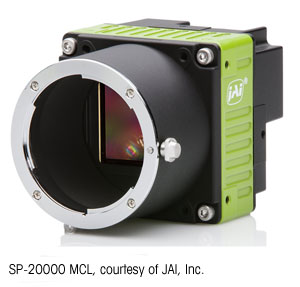
Color machine vision has its challenges. Systems can produce three times the data (or less than one-third the resolution) of a monochrome camera solution. Color can introduce more potential sources for imaging errors, more complexity, more cost, and require careful engineering that reduces the system’s flexibility to deal with lines that make products of varying shape, colors, and size. In fact, if designers can find a way to use filters and lighting to measure a colored area using monochrome cameras, they usually do. However, for many applications ranging from electronic manufacturing to printing and food processing, color is the only way to solve the problem. Let’s look at some of the considerations a system design needs to take into account to create a successful color machine vision solution, including careful matching of camera, optics, and light source.
refer to:http://www.visiononline.org/vision-resources-details.cfm/vision-resources/Is-Your-Machine-Vision-System-Color-Blind/content_id/4333


